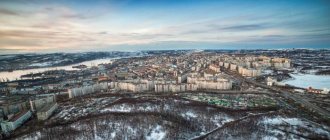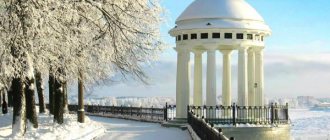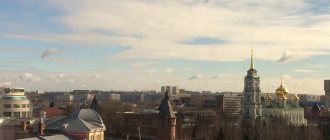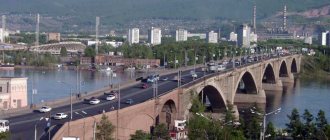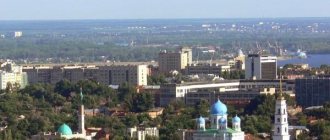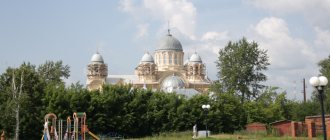The poorest and most criminal region in Russia. A remote corner where the number of inhabitants is several times less than the number of livestock. And also the insensitivity of the locals to alcohol with all that it entails, stories about inter-ethnic clashes during the era of perestroika and the mass exodus of the Russian population in our time.
In ratings of tourist attractiveness, the Republic of Tuva occupies one of the last places in the country. However, despite the existing problems and not the most attractive image, this is an incredibly interesting region, where the flavor of nomadic culture is seasoned with unusual culinary traditions, shamanic rituals are intertwined with Buddhism, and a kaleidoscope of landscapes changes from taiga to semi-deserts. Alexey Egorov tells more about why to come here, as well as about the stereotypes and nuances of traveling around Tuva .
Almost all of my fellow tourists dream of visiting Tuva, but deny themselves this pleasure due to the bad reputation of the region. A recent report by the Editorial Office from there and a repost of an excerpt from it by Dude only strengthened such a prejudice. But it’s better to see it once for yourself than to spy it a hundred times in the media. Following this principle, I went on a road trip around Tuva with a group of the New Nomads tourist club and realized that the seventeenth region of Russia is quite safe for tourists, and well-known stereotypes about Tuvans often do not stand up to criticism.
They drink but don't kill
to the Tuvan capital Kyzyl from Moscow by plane, but this is not a cheap option. Thrifty tourists get to the region differently: by train to Abakan and there they order a transfer along the Yenisei federal highway. The section of the route from Abakan to Kyzyl is extremely picturesque. Here you will find the Siberian taiga, and the mirror of Lake Oya Ergaki and Aradan mountain ranges , and the Nolevka pass overlooking the endless steppe sea with islands of hills rising here and there... Beyond the pass is Tuva.
It is from the Yenisei highway that for many people their acquaintance with Tuva begins. People go to the Ergaki National Park, stop at Tuvan cafes along the way, ask drivers and guides about what kind of people they are – Tuvans, and in response they receive a fair amount of negativity. From what I personally heard: Tuvans are spontaneous - so much so that they relieve themselves right on the streets of Kyzyl, cruel - they even have a saying on this topic, they say, a wedding without a corpse is not a wedding, and they lose their heads from a glass of vodka.
Regarding spontaneity, these are all lies. I have not encountered any cruelty, but I think that is also greatly exaggerated. On the Yenisei embankment in Kyzyl there were many newlyweds and not a single fight. Our guide Lyosha Khoyugban worked as a toastmaster before coming to tourism. I couldn’t resist asking him about the veracity of the cruelty attributed to Tuvans at weddings. “Well, this is too much,” Lyosha was taken aback, “no, of course.”
But the information about the special sensitivity of Tuvans to alcohol is true. Drunk people in Kyzyl lie right next to the local drama theater, city administration and other central buildings. To the question of how to react to this, the answer is obvious: don’t drink it yourself, don’t offer it to Tuvans, and if you really feel like walking around Kyzyl in the dark, do it in a group and preferably with one of the trusted locals.
Religion and culture
The culture of Tuva is largely a nomadic culture, which determines the way of farming. The main occupations of the indigenous local people are still hunting and nomadic pastoralism, namely reindeer herding and horse breeding, which are important suppliers of a variety of food products such as meat and milk.
The special status of a small people, as well as the noticeable transport isolation of Tuva from other regions of the country, allowed the Tuvans to preserve many of their rituals and traditions intact, among which Tuvan throat singing is the most well known.
Today, in the capital of Tuva there are national theaters, there are traditional cultural ensembles and schools where teaching is conducted in the national language. All this contributes to the preservation of national identity.
The fate of the conductor
With the verified locals, the situation was as follows. The director of our tourist club Pavel Dobryak , through intermediaries, contacted Tuvan guides, who pleasantly surprised us with their friendliness and reliability. The expectations were alarming - on the Internet they write that local guides are not necessary, they can raise prices towards the end of the route and get drunk at any moment. Nothing like this happened on our trip, so I can confidently recommend the instructors of the Irbish tourist club - Victoria Sain-Belek and the already mentioned Lesha Khoyugban .
Lyosha is such an interesting person that an entire article could be dedicated to him alone. He came to tourism after a series of life's ups and downs, including being under investigation for horse theft, alcoholism, and the loss of several fingers after an attack by hooligans. This flaw does not prevent him from playing the guitar and harp masterfully. And how skillfully Lyosha masters the technique of throat singing!
By the way, about singing. Khoomei - Tuvan throat singing - is still extremely popular in Tuva today. Elements of khoomei are in the repertoire of all Tuvan groups, one of which, bearing the unpronounceable name “Huun-Khuur-Tu” , was even nominated in 2006 for the most prestigious award in the world of ethno-music - World Music Awards. Our group, however, liked the work of the Tyva . During the expedition, at Lyosha’s encouragement, we even learned the song “Ezir-Kara” (“raven eagle”).
And how did a person with such talents come to mountaineering? “In May 2022,” says Lyosha, “Victoria Valerievna invited me to Mongun-Taiga. The shift in consciousness that led me to mountaineering happened there. At around 3800 meters we got lost. We wandered for more than two hours. A very strong wind was blowing, visibility was zero. I didn’t notice how I stepped onto the ice ledge and fell... Victoria saved me. We were walking together - she caught the ledge with an ice ax, and I hung on the rope.”
After this incident, Lyosha took up mountaineering seriously - he began to regularly go on alpine climbs, defend categories, climbed Elbrus and many lower peaks, but by no means easier. He did not buy his first equipment, but for reasons of economy he made it himself on a lathe. Here it would not be amiss to say that Lyosha has seven (!) children, but he does not like to talk about this side of his biography. He only assured that all the children are from the same marriage and live with their parents.
Republic of Tyva - facts from history
Tyva is one of the few territories that has been independent for a long time, which is noticeable even now. The number of residents of other nationalities other than Tuvans is very small. A few facts:
- this territory, called “ Uriankhai Territory ,” has been part of the Siberian province since 1914;
- from 1926 to 1944 it was the Tuvan People's Republic , after which it joined the USSR as the Tuva Autonomous Region , and since 1961 it was renamed the Tuva Autonomous Soviet Socialist Republic ;
- current status: " Republic of Tyva " was received in 1991.
Tuvan gold
A tourist coming to Kyzyl is obliged to visit the Yenisei embankment. “Center of Asia” is located here (the installation location of the monument is, of course, conditional, but the center of Asia is really located somewhere in Tuva) and the composition “The Royal Hunt” . Both works are by sculptor Dasha Namdakov . The city museum houses a unique collection of Scythian gold discovered on the territory of the republic. I also remember the official street art on the theme of the Great Patriotic War, for some reason with Defense Minister Shoigu in the leading role...
There are almost no quality souvenirs or at least locally produced goods in Kyzyl. At exorbitant prices, Pasha allegedly bought shaman spoons and a shaman artifact in the form of a dried leg of some artiodactyl. They also found local ice cream, which tastes like sour cottage cheese, and a national dress, presumably made in China. That's all, actually. For the main city of such a colorful region, this is unacceptably small.
Photo: Alexey Egorov
Perhaps the main attraction of Kyzyl is not the monuments and “jewelry” of ancient times, but the people. I read somewhere that the mesmerizing beauty of Tuvan girls attracts photographers and fashion designers to this region. Pure truth! Tuvan women are so beautiful that it is difficult to resist staring at some of them. Many girls are very friendly. While we were walking along the embankment, local beauties came up to us several times (sometimes accompanied by gentlemen) and asked where we were from and what our fates were in Tuva.
The city is experiencing a demographic boom, so there are a lot of young couples, pregnant women and children on the streets. You walk and realize how old the population of the Russian-speaking regions of the country has become. And in Kazan, where I come from, in socio-economic terms everything is much more prosperous than in Kyzyl.
Mountains and basins
The region where Tuva is located is characterized by a pronounced mountainous terrain. Most of the territory of the republic is occupied by mountains, in percentage terms this is approximately 82%. The rest is occupied by intermountain depressions, the largest of which is called the Tuva Basin, the length of which reaches four hundred kilometers, and the width ranges from twenty-five to sixty.
In addition to Kyzyl, in the basin there are cities such as Shagonar, Chadan, Ak-Dovurak. All these cities are located in the steppe zone, despite the fact that the basin itself is located in the so-called rain shadow of the Altai Mountains, which contributes to heavy rainfall in the summer, while winter is cold and dry, and practically windless.
The republic is surrounded on all sides by spurs of geographically and culturally important mountain ranges. From the east and north, Tuva is framed by spurs of the Sayan foothills, the peaks of which reach a height of 2000-3000 thousand meters above sea level.
A famous natural attraction of the republic is the Derby-Taiga basalt plateau, on which there are sixteen extinct volcanoes. The Great Yenisei originates on the same plateau.
“Now it’s the liver’s turn.”
They say that every Tuvan, if not a nomad himself, then certainly has relatives wandering with herds of sarlyks (local yaks) or sheep somewhere in the mountains. While in the region, be sure to visit the nomads’ yurt, accompanied by a Tuvan guide, who will help in establishing a dialogue - in the remote kozhuuns (districts) of Tuva they do not speak Russian well.
In one of the nomad camps, for a nominal fee, we had a great time riding short Tuvan horses and, most importantly, took part in driving a sheep. Under the leadership of Lyosha, we separated a small group of animals from the sheep herd, and in it, in turn, we grabbed a specific ram by the legs (one tourist per leg). Here he is lying spread out on the ground, Lyosha with a determined look approaches him with a knife and... announces: “Not the one.”
Photo: Denis Generalov
Everything happened again. Finally, the desired ram was caught, and Lyosha demonstrated his slaughtering skills. Purely technically, it looked like this: a hand is inserted into an incision approximately in the area of the solar plexus between the skin and the rest of the carcass and, as I understand it, a vital nerve is torn off. According to Lyosha, the ram does not feel pain if it is cut this way. It’s hard to believe: at the moment of the murder, a large tear rolled out of the sheep’s eye, wide open in horror.
Before our eyes, the Tuvans cut up the carcass and boiled it in a huge cauldron. The meal began, during which Lyosha put more and more parts of the ram into the pot and, before passing the container around, explained: “These are kidneys.” Or: “Now it’s the liver’s turn.” Eating fresh, aromatic lamb on both cheeks alternated with drinking araga , a moonshine made from yak milk.
I’m not a connoisseur of alcoholic drinks and don’t know much about them, but I liked the araga. It has a very pleasant creamy taste and a degree that is almost unnoticeable. Because of this feature, you can drink aragu in glasses, and then get up and... immediately fall unconscious. They say that such a fate befell Boris Nikolayevich Yeltsin during his visit to Tuva in 1994. Also, according to Victoria, using a Tuvan araga recipe, one enterprising Englishman launched the production of luxury vodka under the Black Cow .
Water resources of Tuva
The Government of Tuva pays great attention to maintaining environmental balance in the republic. An important part of the local ecology are numerous bodies of water, many of which are drainless and salty.
However, the most important river not only in Tuva, but throughout Asia is the Yenisei, which is one of the largest rivers in the world. Most of the rivers flowing through Tuvan lands belong to the basin of this great river.
The Yenisei is formed as a result of the confluence of two large rivers - the Big and Small Yenisei, which are fed mainly when the snow begins to melt in the mountains in the spring. Since summers are often dry, spring meltwater is the main source for many small rivers in the region, as well as for agriculture.
Abode of boundless dual faith
Tuva is a Buddhist region. We were reminded of this back in Abakan - the Tuvan driver who picked us up from the station had an amulet with the image of the Dalai Lama hanging in his car. When entering Kyzyl, a huge mantra laid out on Mount Dogee . It can be seen from anywhere in the city. We didn’t climb the mountain, but we visited the main Buddhist temple of Kyzyl Tsechenling , which translated from Tibetan means “the abode of boundless compassion.”
Before visiting the temple, according to the Buddhist tradition, we walked around it three times clockwise, touching all the corners. Judging by the way they wiped themselves, there is no shortage of parishioners here. Inside there are many Buddha statues of all sizes, offerings in the form of bowls of rice and bundles of candles, drums... The atmosphere is unusual, but calming. Believers literally stretch out in front of the altar in prayer, just like especially religious grandmothers in Orthodox churches.
After seeing Kyzyl, we left the city and set up tents in a yurt camp on the banks of the Yenisei. Where we witnessed a ritual performed by a Tuvan shaman for a young German couple. A woman in a robe with a huge number of ropes sewn onto it and a crown of feathers on her head walked around the fire and beat a tambourine, and the Germans watched. Afterwards, the camp administrator approached us and asked us to move away so as not to interfere with the sacred action.
Buddhism and shamanism in Tuva are closely intertwined. At almost every pass or peak here you can find an ovaa - a pole strengthened with ropes, on which Buddhist believers hang multi-colored silk scarves (in Tuvan - chalamaa ). Our guides did not have scarves with them, but they still left gifts in the form of small change, and later it turned out that Lyosha sometimes practices shamanic practices - for example, to establish good weather.
In the footsteps of the president
The main goal of the expedition was Mount Mongun-Taiga (3976 meters). It is interesting that on the map of Tuva there are two peaks with this name. The lower one is usually called small Mongun-Taiga by tourists, and there is no information about it on the Internet at all. Pasha has already set out to fill this gap in the future - he was so impressed by the “absolutely Himalayan” view of the peak, opening from the nearby village of Kyzyl-Kaya . However, our path lay to simply Mongun-Taiga. The mountain is the highest point of Tuva and all of Eastern Siberia, and is revered by Tuvans as sacred.
While fires were burning in the Krasnoyarsk Territory, rainy weather set in in neighboring Tuva, due to which the planned ascent had to be postponed. Mongun-Taiga these days was almost invisible behind the clouds, and we spent our time moving from one natural wonder to another. However, we appreciated the first of them – the Yenisei River – even in good weather. Despite the very fast flow, the water in the Yenisei turned out to be surprisingly warm, whereas, for example, in the area of the Krasnoyarsk hydroelectric station, where the river is much wider, it is impossible to swim in it due to the cold.
In general, in Tuva we swam, not paying attention to the water temperature, wind strength and standards of decency - fortunately, the locals did not see this. Almost every body of water had some striking feature. Thus, Lake Ak-Khol next to the children’s camp of the same name is considered healing. It is inhabited by crustaceans, which, if you stand in the water for a long time without moving, dig into the skin and suck the “bad blood”.
on Lake Hindiktig-Khol . Two guys from our group, inspired by the example of the president, also decided to try their luck. They found a shaft next to the fisherman's hut, tied a piece of slate to it - and there was an oar. The boat, which had been laid up by someone, was leaking a lot of water, so they adapted a camp pot for the bailer. The guys already had fishing rods with them.
The fishermen soon returned with nothing, at the same time the owner of the hut arrived on a motorboat and gave us a whole net of fish, and not just any fish, but grayling. Regarding the fishing rods, he remarked: “I’ll tear out my eye if any of you catch a fish here with a fishing rod.” Despite his simple appearance, our benefactor, as it turned out, during Soviet times managed to work as the first secretary of the Mongun-Taiga district committee of the CPSU.
My discovery of the Republic of Tuva
to go to Tyva after the advice of friends who had already been there several times before. At the same time, the purpose of the trip was Lake Svatikovo or Duz-Khol , the water in which is so salty that it keeps a person on the surface. And the mud is healing and even heats up to a temperature of about 40 degrees due to some chemical processes. According to reviews from vacationers, it helps with diseases of the joints and skin.
The journey took almost the whole day with several stops to explore the surroundings and take photographs. Of course, someone will say that there is little interesting on the way to the Republic of Tyva . But when the road passes through the mountains, and in the summer you can touch the snow, it’s mesmerizing. to Kyzyl , about 30 kilometers . But it’s still worth having a map or someone who knows the way. It happens that local residents do not really understand the Russian language. Or they just don't want to help. We stayed on the lake itself for about a week - we lived in tents, although there were more comfortable conditions for those who wanted. We were lucky with the weather.
the trip to the Republic of Tyva ; after all, we need to visit different regions of our country. After all, it is so big and different. Next year we will try to go again, but with an excursion program.
The Roots of Nationalism
We went on a road tour through the southwestern regions of Tuva on two “loaves”. The drivers are Lyosha and a certain Sholban. This Sholban turned out to be a very interesting subject. He proudly called himself a “real Tuvan” and did not miss an opportunity to talk about Russia, let’s say, in a nationalistic manner. For example, Sholban called Russian soldiers on the border with Mongolia nothing more than “dogs.”
If without emotions, then Tuvan nationalism is closely related to the great desire of people to preserve their identity and nature. On the Internet you can find information about the cobalt plant in Sailyga , which was closed in the early 90s after Russian specialists hastily fled from there. Naturally, not from a good life - in Kyzyl we talked with a woman whose father was killed with a sharpener there in broad daylight. This is scary, but it’s also scary that in Sailyg, due to chemical emissions from the plant, livestock began to die and children began to get sick.
“Due to the fact that the plant was closed improperly, it is still poisoning everything around,” some Tuvans are indignant on social networks. For environmental reasons, they are also strongly against the construction of the Kyzyl-Kuragino railway. “They don’t want to build it for people,” say the Kyzyl residents, “but to extract minerals and through this destroy our nature.”
I think the future of the Tuvan economy lies in the development of ecotourism and processing of livestock products. And if progress with tourism is obvious (a tourist information center was even opened on the Yenisei embankment), then the second industry was not noticed in Tuva: people live by cattle breeding, and in stores there is milk from the Krasnoyarsk Territory and the Novosibirsk Region ... “But they built four prisons and a huge military unit” , - Sholban is indignant, and his indignation is understandable.
Some Russian-speaking tourists also give reasons for conflicts. Just look at the stories about wise men washing clothes in healing springs ( arzhaans ), which for Tuvans are an object of worship. Or a video on YouTube with an epic race of a team of jeepers to Mongun-Taiga. It’s the same as having a disco in the Trinity-Sergius Lavra , which is why the comments under the video are appropriate.
In addition to the obvious need for environmentally friendly behavior in places where springs flow and in the mountains, in case of possible misunderstandings with the local population, it is better to have Tuvan guides. In the republic as a whole, and especially in remote communities where Russian is poorly understood, they are not a luxury, but a safety factor.
I remember this incident. It’s evening, we’re driving towards our parking lot in the dark, and suddenly two horsemen catch up with us and begin to extort us in the most unceremonious way: “Vodka! Cigarettes!". Lyosha, without reducing the engine speed, shouted something to the impudent people in Tuvan, and they fell behind. If the Russian-speaking driver had sent them any further, the conflict would have only worsened.
Climate and geography
It is generally accepted that the geographical center of Asia is located in the capital of Tuva. However, even if this is not entirely true, you can be sure that in any case the center is located in the republic.
This central position of the republic makes its climate sharply continental, which means there are long, harsh winters, while summers can be quite hot. There are known cases when the temperature in the summer months reached +38 °C.
Despite this, the region where the Republic of Tuva is located is equated to the regions of the Far North, which leaves an imprint on all economic activities carried out in the region. In the mountainous regions of the republic there are areas where the ground never thaws.
At the same time, the growing season reaches 150-160 days a year, which makes it possible to grow many crops.
The Republic borders the Irkutsk region and the Krasnoyarsk Territory, as well as several national regions - Khakassia, Buryatia and the Altai Republic. In addition, Tuva is a border region of Russia, as it shares a border with Mongolia.
Day X
They reported via satellite phone that clear, sunny weather was expected in the Mongun-Taiga area in the next two days (Lyosha later said that he was the one who lured us in). It took one day to get closer to the mountain, and finally, tomorrow the ascent to Mongun-Taiga should take place. The day before, I was so worried that I couldn’t sleep, and I got up with only one thought: to quickly return to camp to get some sleep.
We left at 20 minutes past four in the morning. With the expectation that when the water is low, we can cross the river flowing from under the glacier and have time to go down to the camp before dusk. After the Burevestnik pass (a continuous “powder”), a section began that looked like a cardiogram pattern: ascent - descent, ascent - descent... At the top of each ascent, I lay down on the ridge and closed my eyes for a few minutes - at least some compensation for the sleepless night.
At the place where the rocky part of the route turns into ice and snow, we put on our climbing equipment and split into two groups. A little more, and the main goal of our journey will be achieved. Fatigue, coupled with insomnia, disappeared as if by hand. I relaxed, holding the ice ax like a cane, and... I didn’t notice how my right leg fell into the snow above the knee. Crack! After all, this thing is necessary - a rope!
We're at the top. You can’t tell by looking - Mongun-Taiga’s is flat and wide, like a football field. And in the center is ovaa. There are so many ribbons and other gifts, from sweets to the skull of a mountain sheep, that you understand: the sacred status of the mountain does not prevent Tuvans from climbing here.
Mongun-Taiga and I left my small gift (half a chocolate bar). Only very arrogant people can think that they have conquered the mountain. In fact, the mountain let them in. Thank you, Mongun-Taiga, for this! And Tove - for her hospitality and the beauty she saw.



